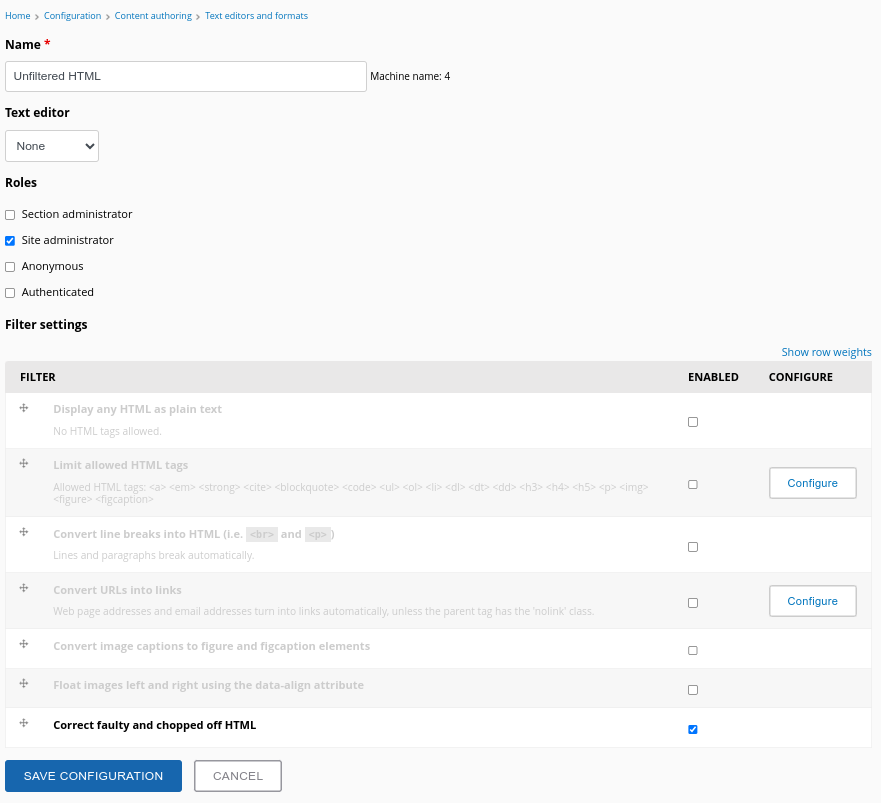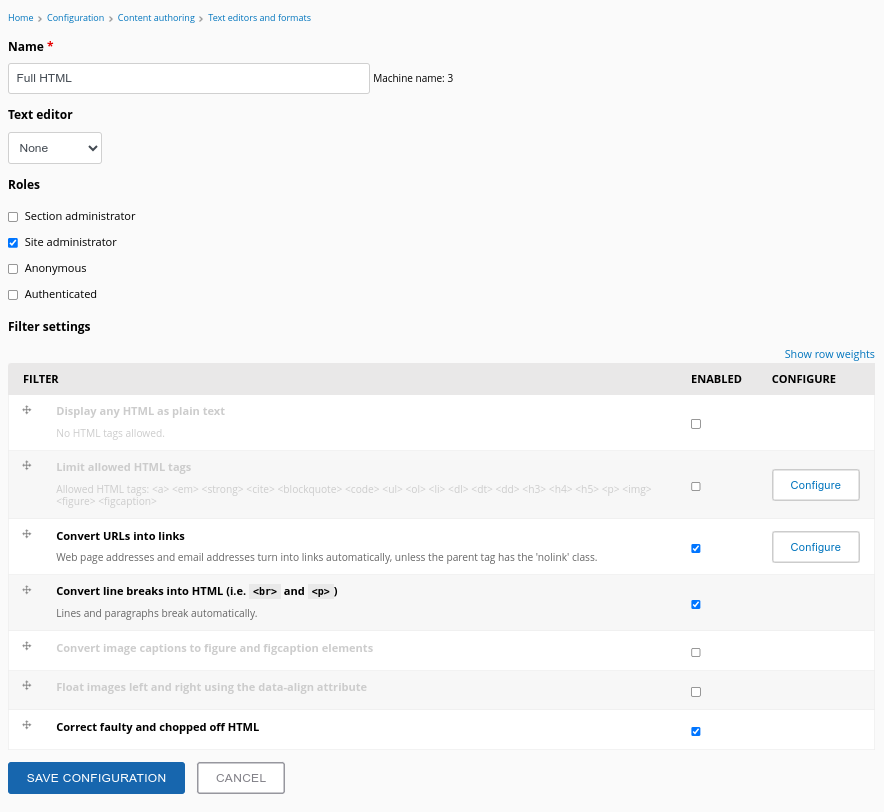I have a site that I converted from D7. Much of the content was written before there were WYSIWYG editing plugins. As I'm updating some of the content, though, I'm enabling CKE5 for obvious reasons. The problem I'm having is that in about half the cases, the trimmed output after the CKE5 conversion is nothing at all.
I suspect that it's happening because when it is "raw" HTML (which in my case has <br> tags between paras rather than <p> tags), the text_summary function trims it at sentence boundaries, but CKE wraps the paragraphs with <p> tags, so then the trimming happens at paragraph boundaries. My trim limit is set at 600 characters, which has always worked well in the past.
There may be an additional issue which has been a problem in Drupal for 15 years: https://www.drupal.org/project/drupal/issues/221257
Anyway, is there a way to get trimming to happen on sentence boundaries as before?
It seems to me that in typical cases, trimmed output shouldn't be nothing at all, but that could just be me. :)
Thanks.




Bug report filed and I fixed it:
https://github.com/backdrop/backdrop-issues/issues/6423
Would I need to fork the entire Backdrop project to file a PR?